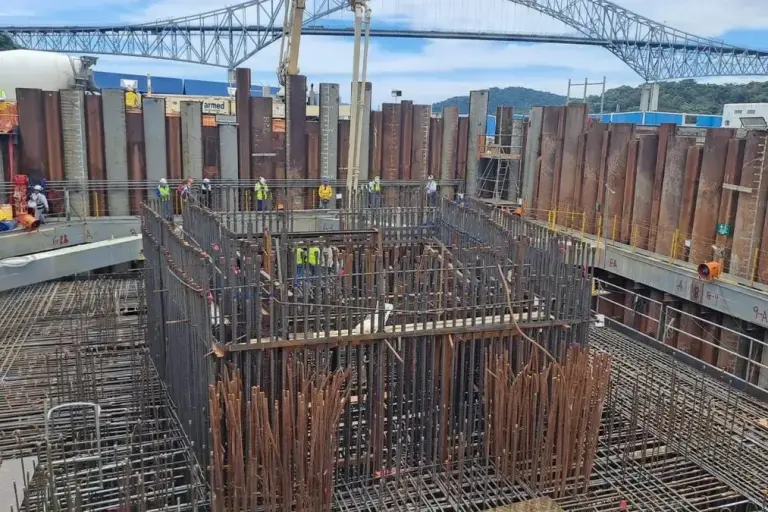Construction on Panama’s monumental Fourth Bridge over the Panama Canal has achieved a significant milestone, reaching 27.13 percent completion. The country’s Ministerio de Obras Públicas (MOP) announced the progress this week as crews began pouring concrete for a main tower foundation. This critical phase marks a major step forward for the infrastructure project designed to alleviate severe traffic congestion in the capital region.
Workers started the continuous concrete pour for the eastern main tower base this past Saturday. Project engineers confirmed this single phase will consume 1,600 cubic meters of concrete. Officials compared that volume to the amount required for building one full kilometer of a dual-carriageway highway.
Officials Mark Construction Milestone
Public Works Minister Jose Luis Andrade characterized the progress as the result of a full year of sustained effort. He directly linked the current achievement to work that started in August of the previous year. The minister provided specific context for the project’s development timeline during a site inspection.
“From August of last year, when we did the first permanent excavation, we have advanced 27.3 percent in one year and two months,” Andrade said. [Translated from Spanish] He added, “It is an important milestone to have reached this point on this date.” [Translated from Spanish]
This concrete pouring operation demands intense focus and coordination. The process requires an uninterrupted 25 to 30 hours of work with dozens of technicians and specialized machinery on site. The engineering team designed the concrete mixtures for extreme durability in the challenging environment.
Engineering for a Century of Service
Fourth Bridge Project Director Manuel Alvarado detailed the specialized concrete specifications. He explained the mixtures must withstand not just structural loads but also corrosion from chloride exposure. The design prioritizes long-term resilience for the vital transportation link.
“These mixtures are impermeable to prevent chloride from reaching the internal steel, guaranteeing a durability of at least 100 years,” Alvarado stated. [Translated from Spanish]
The foundation itself incorporates a massive amount of structural steel for reinforcement. Mario Montemayor, superintendent for the construction consortium, described how twenty pilings, each two meters in diameter, support the entire base. These pilings transfer the bridge’s total load down to the bedrock, providing a stable anchor for the towering structure above. The site will eventually support one of four main towers, each soaring to a height of 184 meters, that will form the iconic cable-stayed bridge structure.
Addressing Delays and Future Impact
Minister Andrade openly acknowledged the project is running approximately four years behind its original schedule. He did not downplay the effect these delays have had on the population. The minister focused instead on the transformative change the bridge will bring upon its completion, particularly for residents of Panama Oeste.
“You cannot measure the cost of this delay, because you also cannot measure the damage it has caused to the quality of life for people in the West,” Andrade affirmed. [Translated from Spanish]
The bridge will create a new direct connection between the eastern and western sectors of the capital. Its design includes several road interchanges intended to improve overall metropolitan mobility. For daily commuters who currently endure long traffic jams at the existing canal crossings, the new span promises a dramatic improvement.
Canal Affairs Minister Ramon Icaza echoed this sentiment, emphasizing the human benefit behind the engineering achievement. He framed the project not just as infrastructure but as an enhancement to everyday living for thousands of Panamanians.
“This work is going to bring more hours of sleep, more family time, and less stress for those who cross the canal every day to get to their homes,” Icaza said. [Translated from Spanish]
The Ministerio de Obras Públicas (Panamá) maintains a projected delivery date of 2028 for the entire project. Construction continues to advance steadily, solidifying the bridge’s status as one of the most emblematic infrastructure projects for national development and regional integration. Its progress is being closely watched by commuters and industry leaders alike.



